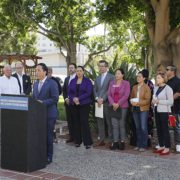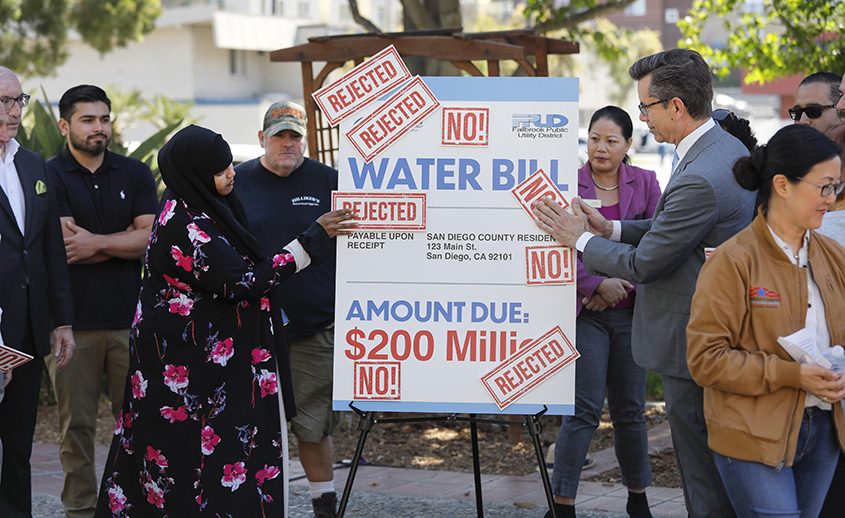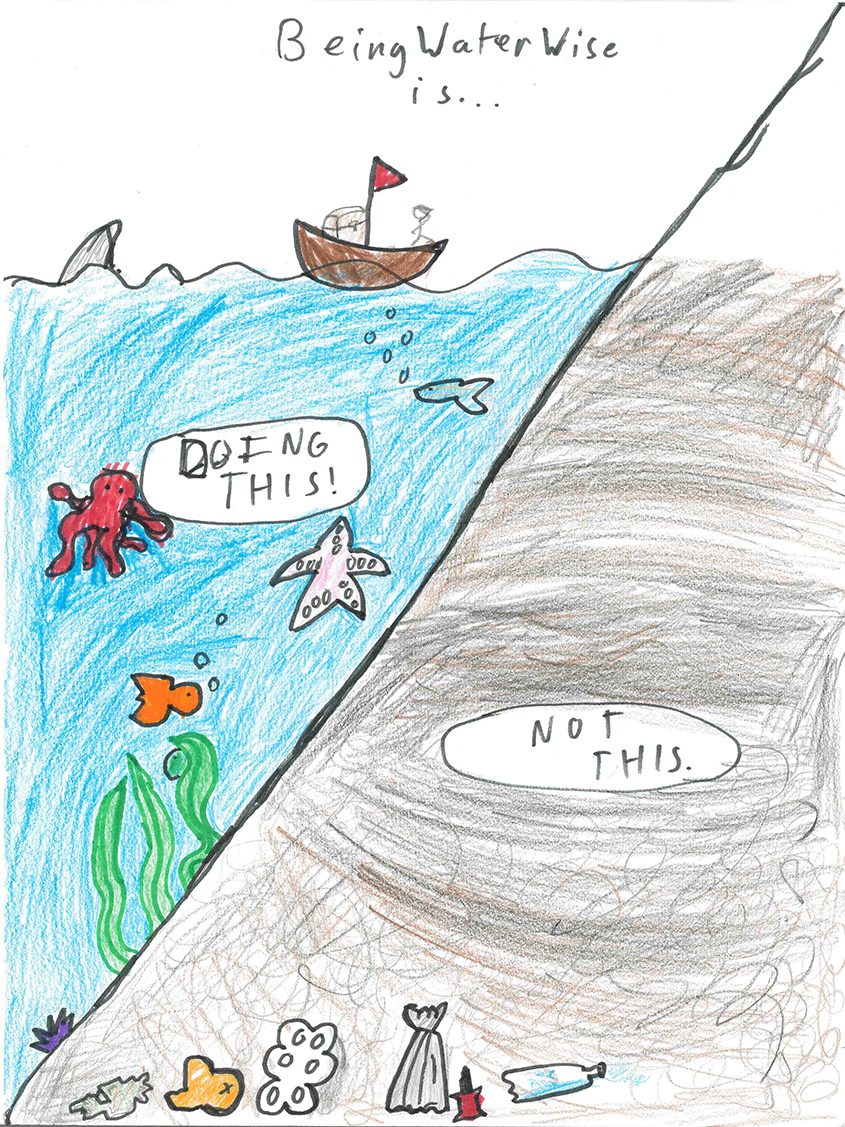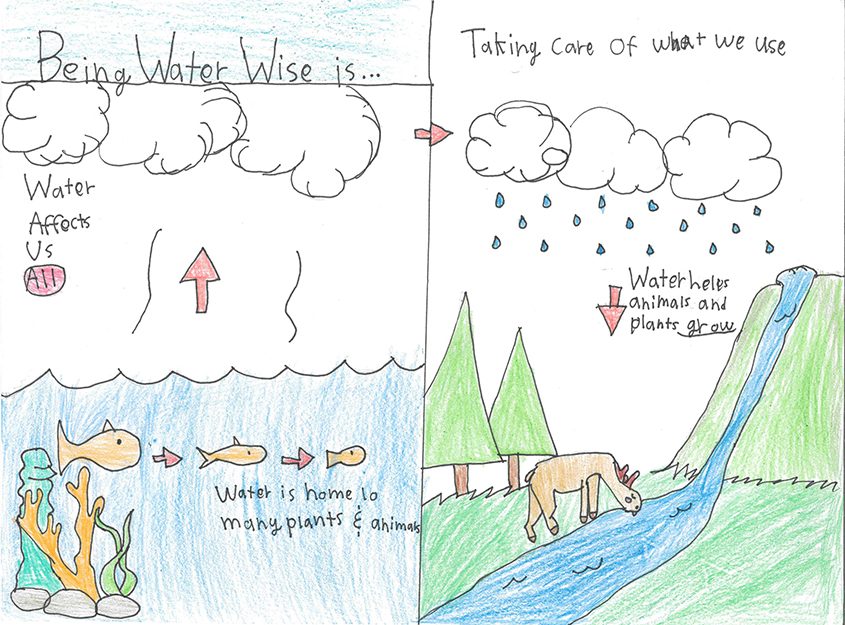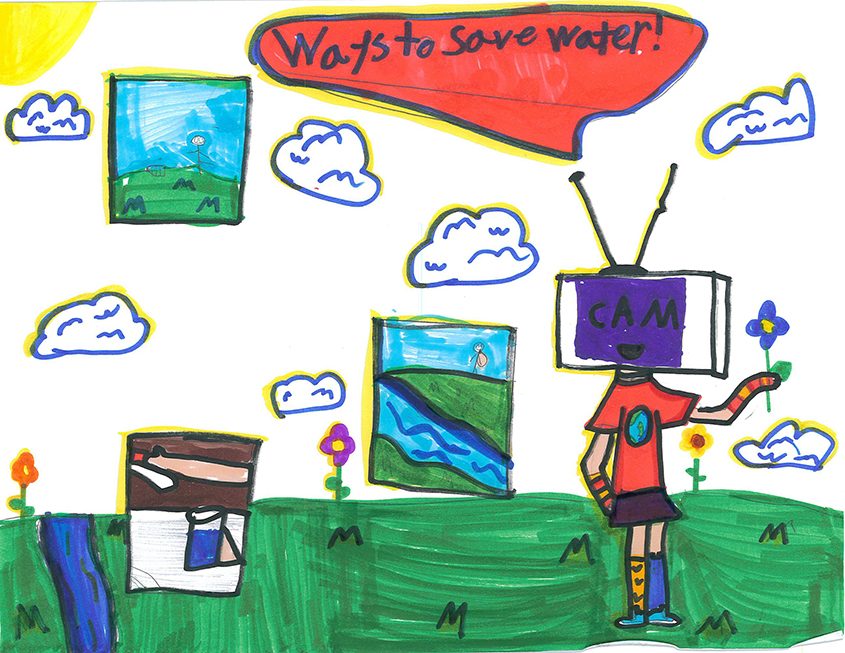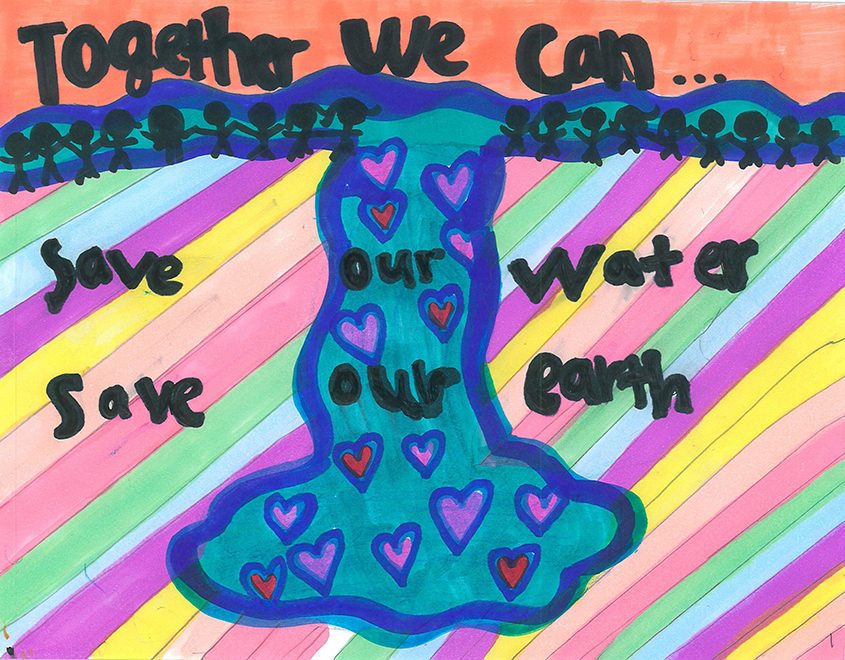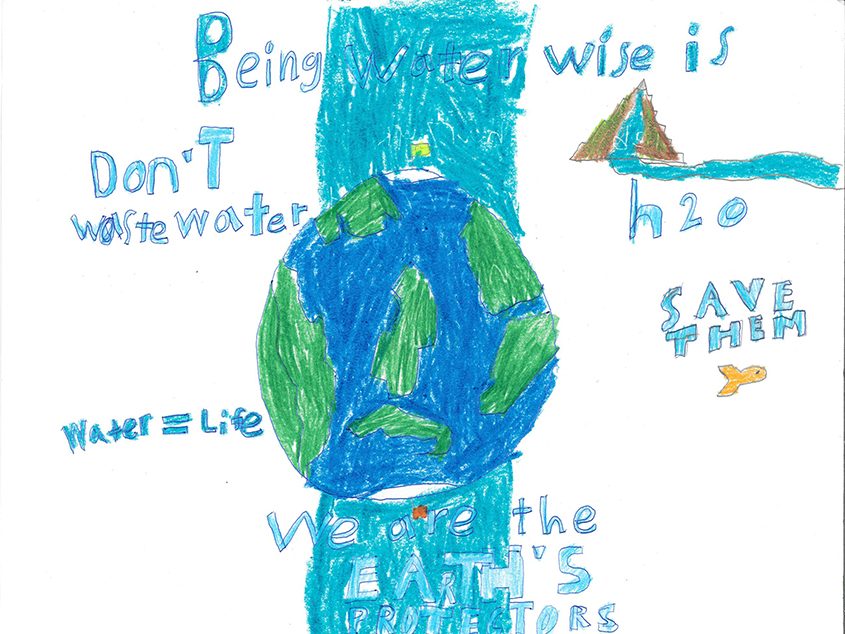San Marcos Unified School District Benefits From Free Water Use Survey
Free water use surveys offered through the Metropolitan Water District of Southern California provide both residential and commercial customers with recommendations to improve landscape and indoor water use efficiency. The surveys are available throughout Southern California, including San Diego County.
The San Marcos Unified School District took advantage of the opportunity for water use surveys at 17 of the district’s school sites. It is among the largest single regional customer survey to date.
Austin Black, water conservation specialist for WaterWise Consulting, oversees the audit project.
“We are auditing the irrigation system of all of the schools with more than one acre of landscape area [for this project],” said Austin. “The survey tests all the different irrigation zones, looking at the type of landscape and plant material, and weather factors. We take all that data and calculate potential water savings based on our recommendations.”
Recommendations may include converting to drip irrigation, installing smart controllers, and replacing grass with a WaterWise landscape with a more efficient watering system.
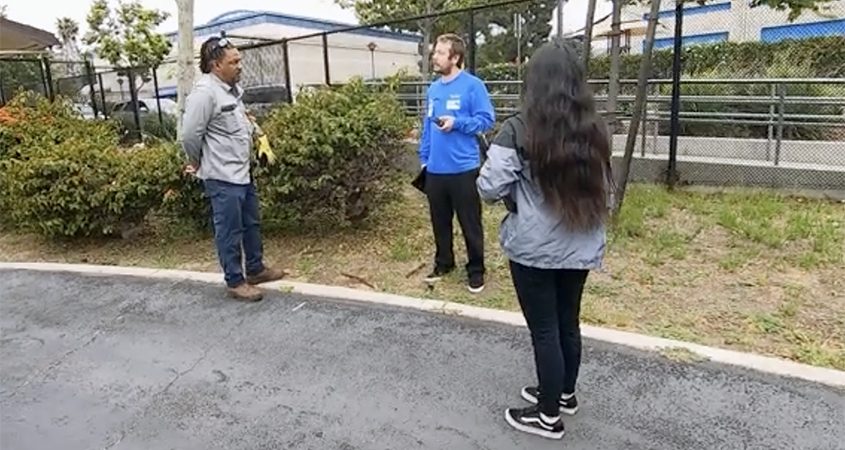
(L to R): San Marcos USD groundskeeper Xavier McCurry, Austin Black, and Arlene Acosta of WaterWise Consulting discuss the water audit. Photo: Vallecitos Water District
Surveyors also adjust existing sprinklers for maximum efficiency and compile a list of repairs and upgrades to improve water use efficiency.
“In our effort to be good stewards of all resources used by the district, the decision to participate was an easy one,” said Ted Norman, SMUSD executive director of maintenance and operations. “We will review all our options and implement as many of the recommendations as we can. It’s a win for everyone.”
Simple improvements add up to significant savings
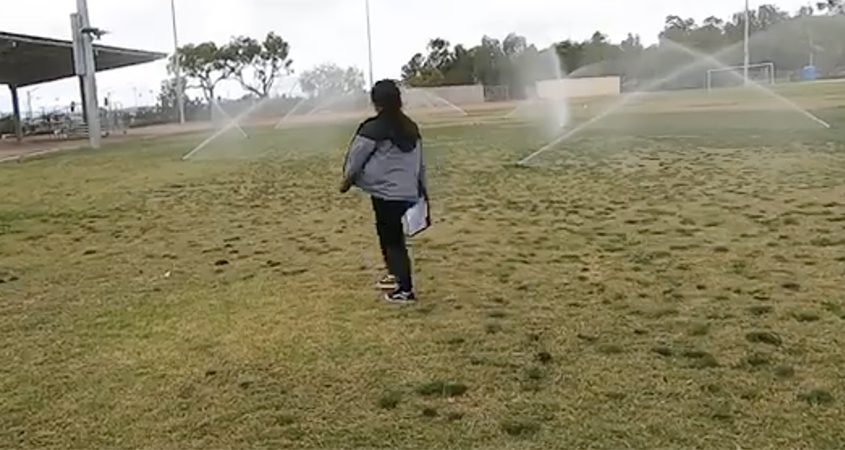
Water Conservation Specialist Arlene Acosta of WaterWise Consulting assesses irrigation coverage at San Marcos Elementary School. Photo: Vallecitos Water District
In one example, the audit report provided to the district for the San Marcos Elementary School estimates that implementing the recommended water-saving measures can reduce landscape water use by approximately 252,000 gallons. Project cost savings are $1,363 annually. If similar savings are achieved at 17 schools, this reflects significant net savings to taxpayers.
“We will submit the reports, and the district can make the changes as they wish,” said Black. “The goal is to create water savings for the entire district and the [water] agency as well.”
MWD can assign a consultant to work with SMUSD and other customers after the audit is completed to help prioritize changes recommended in the survey. The consultant services are free.
Residential surveys find water, cost savings for homeowners
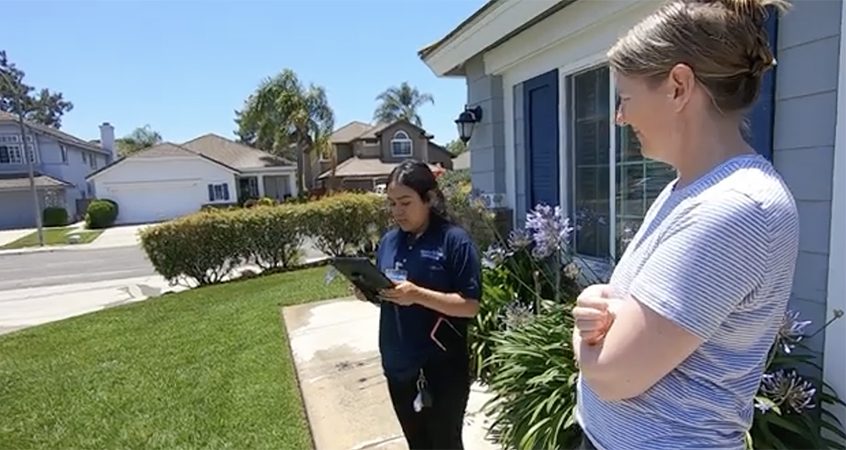
Water Conservation Specialist Arlene Acosta of WaterWise Consulting conducts a residential audit. Photo: Vallecitos Water District
Homeowners can also take advantage of free surveys. Residential surveys look at both indoor and outdoor home water use.
“It’s a comprehensive survey checking for leaks and ways we can make the household more efficient,” said Black.
Along with irrigation improvements, the residential audit reviews the replacement of inefficient plumbing fixtures and other simple adjustments.
Customers of any of the San Diego County Water Authority’s 24 member agencies can visit the website waterefficiencysurvey.com. Enter home address to determine if your residence is located in a qualified area.
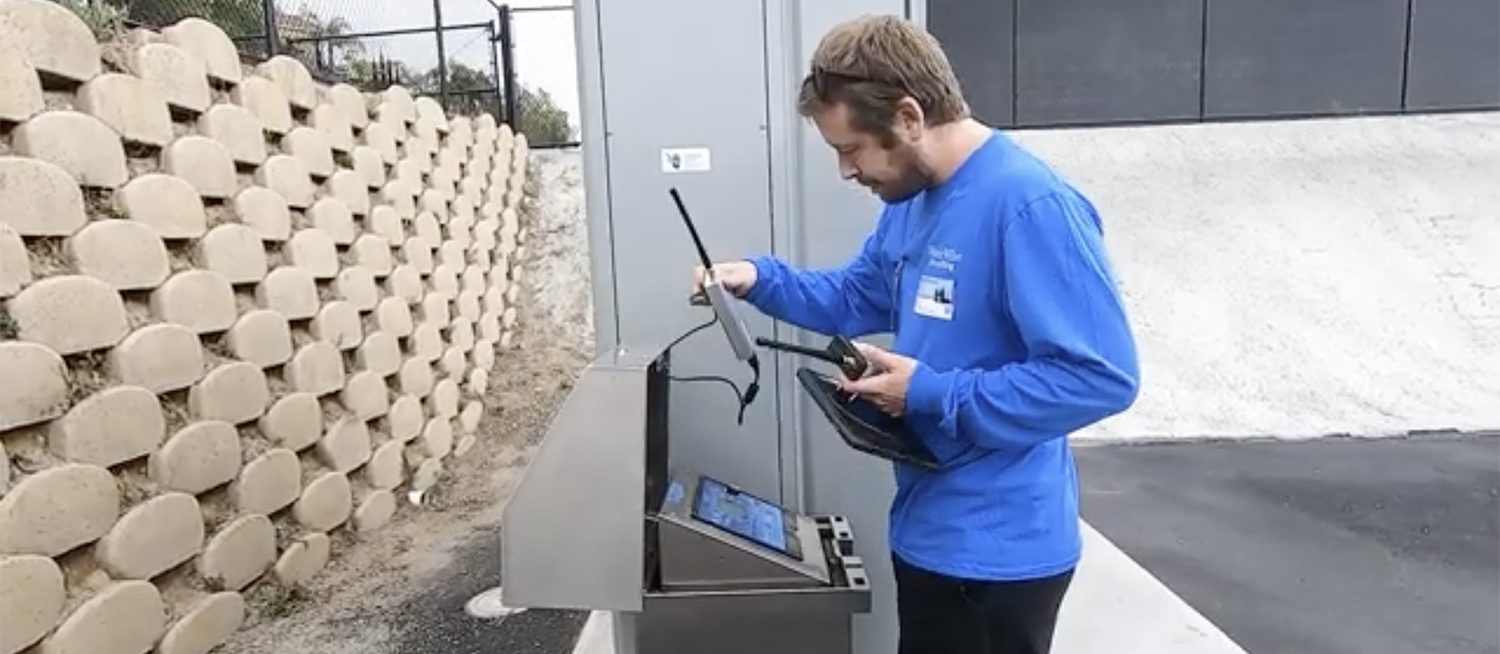
Austin Black with WaterWise Consulting monitors usage during a water audit at San Marcos Elementary School. Photo: Vallecitos Water District
A certified landscape irrigation auditor will schedule a survey and provide written recommendations for qualifying properties. Participants will receive a written report that includes the following:
- Data collected during the survey.
- Recommendations for improving the site’s irrigation efficiency including system repairs, equipment updates, and irrigation scheduling.
- Information about available financial incentives to help with the cost of recommended improvements.
Surveys are scheduled on a first-come, first-served basis. Applying does not guarantee a survey will be provided. Properties may only receive one survey for the life of the program. After filling out an online application the next step is scheduling a visit from a certified landscape auditor.
San Diego County residents can also take advantage of savings with rebates on a variety of water-saving technologies such as high-efficiency clothes washers and toilets, rain barrels and irrigation nozzles.
(Editor’s note: The Vallecitos Water District is one of the San Diego County Water Authority’s 24 member agencies that deliver water across the San Diego County region.)


